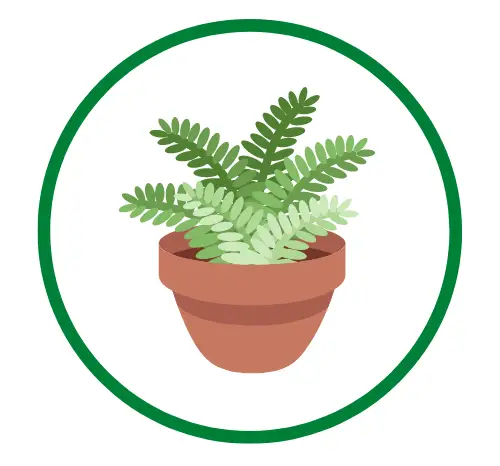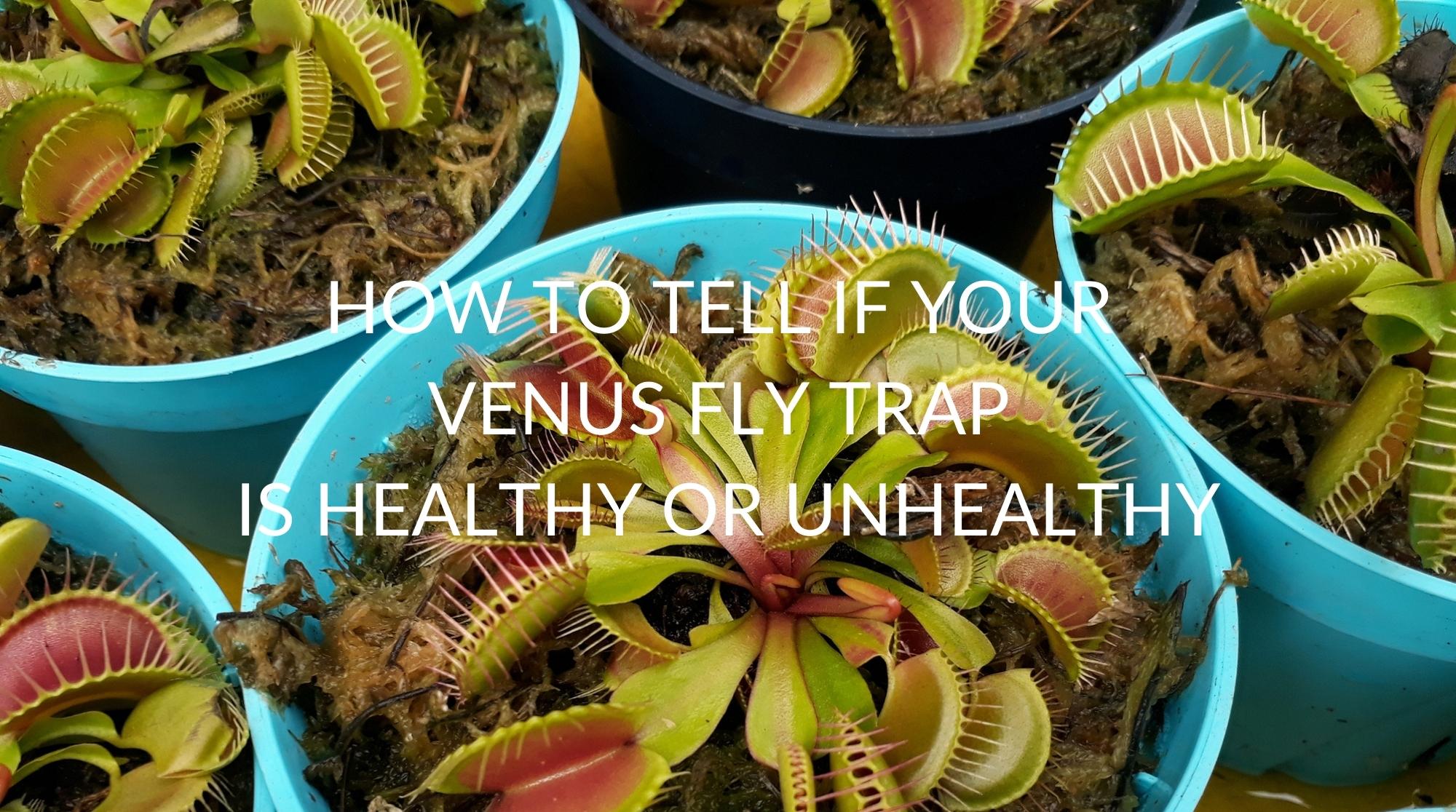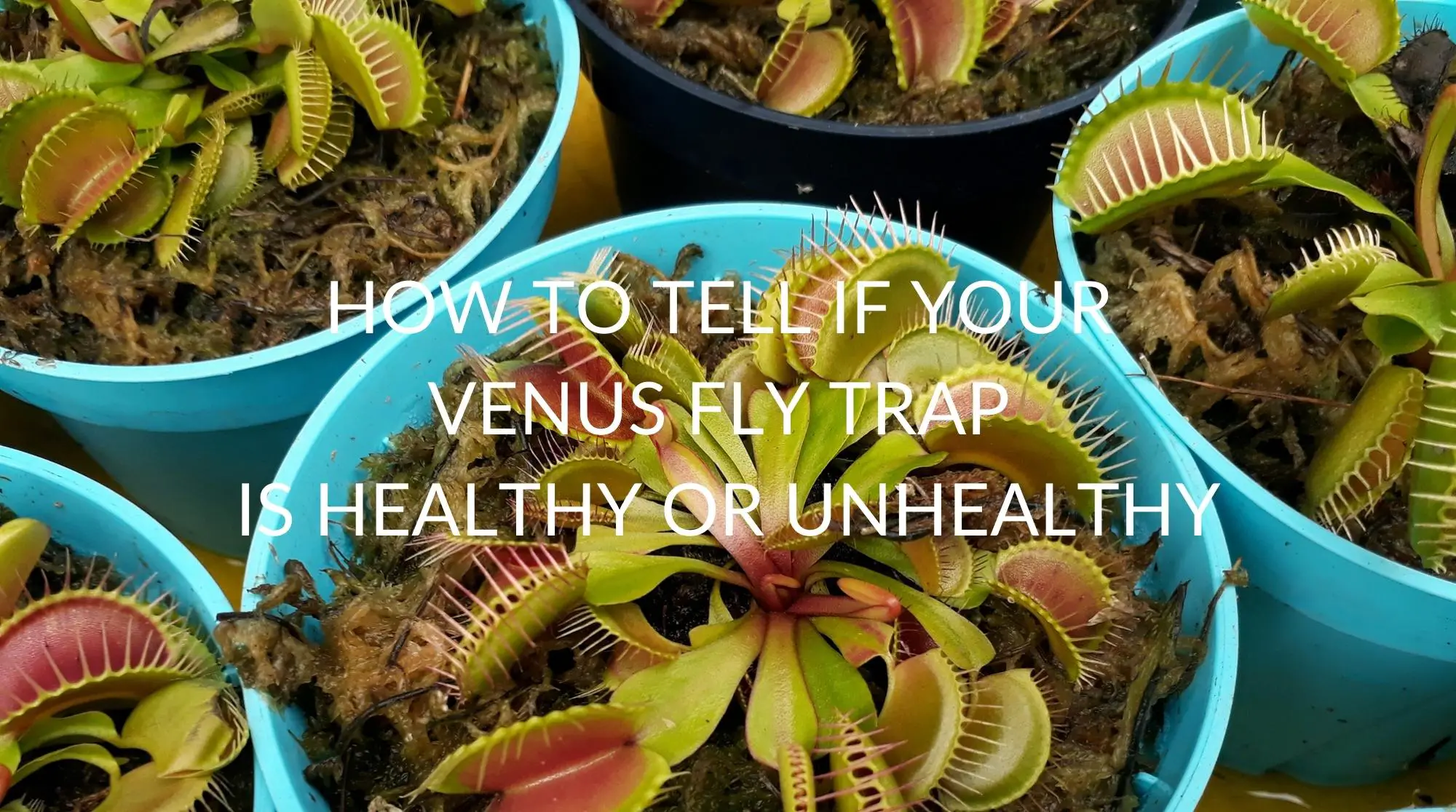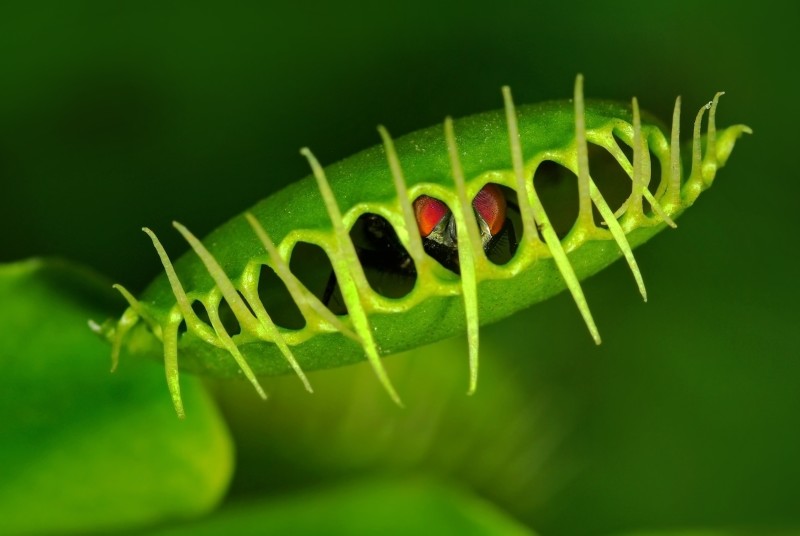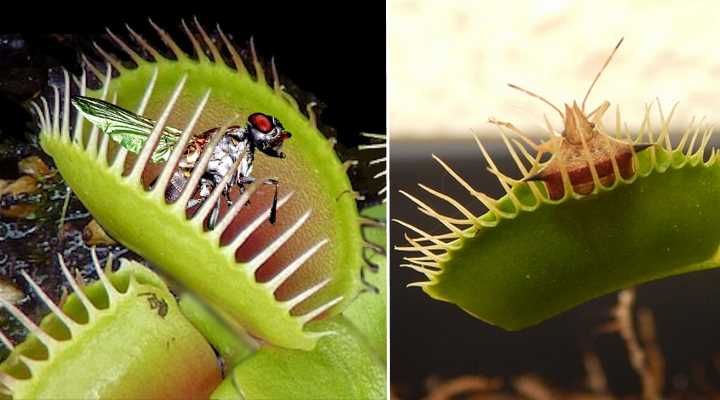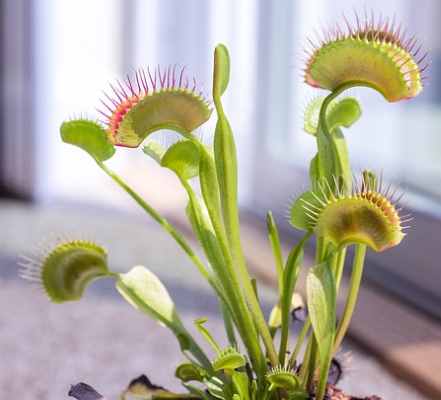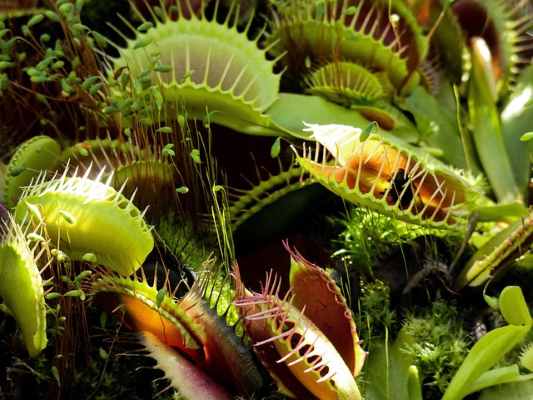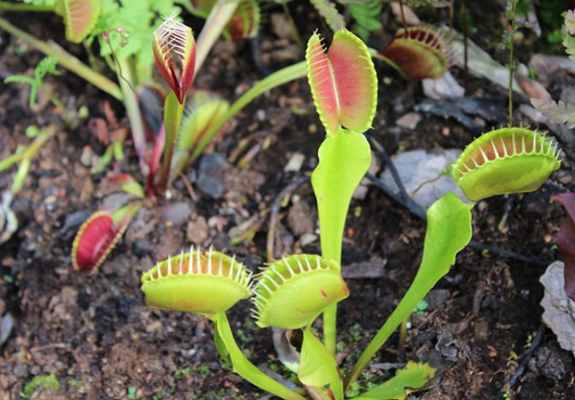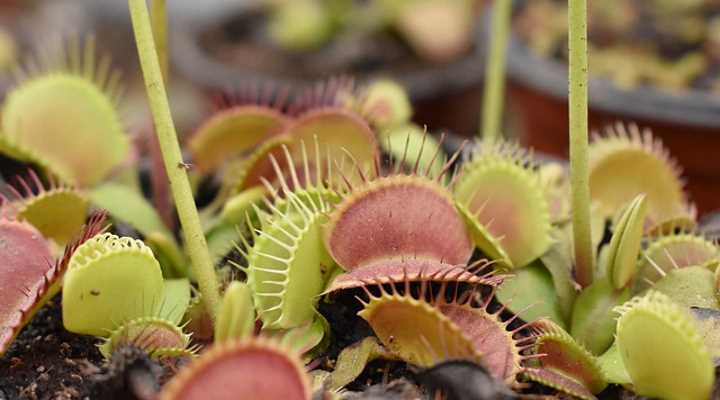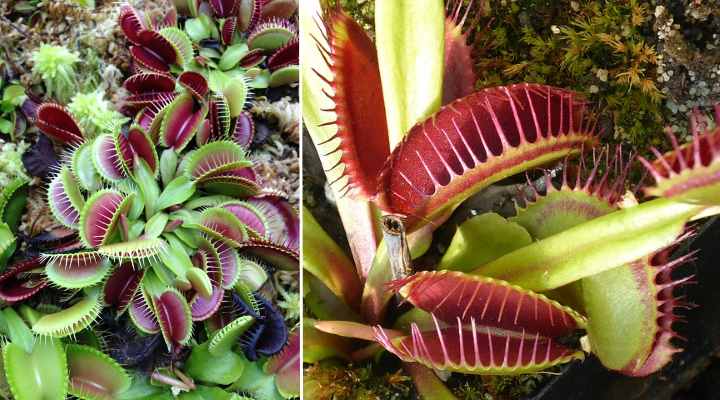12 Reasons Why is Unhealthy Venus Fly trap (with solutions)
Popular carnivorous plants like the venus flytrap catch insects and then “consume” them. The Venus flytrap has two hinged lobes that draw insects and flies to their sweet nectar.
The lobes of the surface’s tiny bristles close when an insect, such as a fly or a spider, touches them, trapping them. The plant feeds by absorbing the nutrients from the insect, which are dissolved by fluids from the leaf tissue.
The Venus flytrap is one of the few carnivorous plants that makes visible movements to capture its prey. It’s fascinating to watch the groups of toothed lobes close when an insect lands on them.
It can be challenging to maintain a Venus flytrap at home. Regarding sunlight, moisture, and winter dormancy, the unusual plant has some unique care requirements.
However, with the right care, you can successfully grow a Venus fly trap at home so that you can take pleasure in viewing this fascinating insect-eating plant.
The Venus flytrap can be grown in a pot at home or in a warm, sunny garden using the instructions in this article. You’ll discover more about the other Venus flytrap varieties in addition to a care manual.
Venus Flytrap (Dionaea muscipula) Facts
The Venus flytrap belongs to the genus Dionaea and the family Droseraceae of perennial subtropical flowering plants. It is the sole species in its genus and is a natural habitat in North Carolina and South Carolina.
Venus fly traps can only be grown outside in moist, acidic soil in USDA zones 8 to 10. They are a low-growing plant, so finding them in the wild can be difficult.
The elongated, heart-shaped leaves of fly traps have toothed margins and a hinged lobe at the end. The carnivorous plants are rosette-shaped and have four to seven leaves.
The stems are 1.2″ to 4″ (3 to 10 cm) long, but only the leaves are visible because the majority of the stem is underground. Leaves can either grow flat on the ground or at an angle between 40 and 60 degrees.
Fly traps have a two-lobed circular trap with spiny teeth along the edges. Tiny bristles on the surface of the lobes interlock as the trap closes. The interior of the trap can be red, light burgundy, pink, green, or purple depending on the species.
The fact that Venus flytraps only close when an insect enters the “mouth” area is an intriguing characteristic. The delicate hairs inside the lobe are typically only touched repeatedly before the plant’s traps close.
By doing this, the plant saves energy and doesn’t respond to the wind or rain. The fact that the flower stems on plants are longer than the plant’s “jaws” is one of their distinguishing features. About 6″ (15 cm) long, the protruding flower stems are twice as long as the leaves.
The plants’ growth feature makes sure that only non-pollinating flying or crawling insects—not pollinators—are captured by the plants.
Venus Flytrap Flower
Five white, star-shaped, ovate or obovate petals and five green stamens make up a Venus flytrap flower. The long upright stems with white flowers appear in late spring. The flytrap plant expends its energy on making seeds after pollination in order to reproduce.
Do you let your Venus flytrap bloom? It is best to trim the flower stalk before it blooms if you are taking care of a Venus flytrap at home. The stalk, which emerges from the center of the plant, is a cylindrical stem.
The Venus flytrap will grow slowly for the majority of the year if you let it flower. Cultivated plants occasionally lose their life after flowering.
How to Grow Venus Flytraps
Venus flytraps should be grown in pots with a 2:1 mixture of peat moss and perlite for best results. For best growth, place it on a sunny windowsill. Regularly water the soil to keep it consistently moist. Keep the plant cool and out of direct sunlight during the winter.
What Do Venus Flytraps “Eat”?
Venus flytraps “consume” spiders and tiny insects. Ants, beetles, slugs, little caterpillars, flies, and even tiny frogs are common prey items for traps. After capturing its prey, a Venus flytrap releases a liquid that, over the course of three to five days, decomposes the insect. The meal is then consumed over the course of up to 12 days.
The plant will open its trap after feeding to reveal the exoskeleton. As a result, the subsequent unwary insect is attracted, and the feeding cycle continues when the hungry plant captures its subsequent prey.
The bug trap stops catching bugs after about five meals, but it continues to photosynthesize before dying. Feed it with insects or arachnids only, and avoid feeding it small pieces of human food.
This causes the traps to rot and turn black. Fly traps employ significant quantities of energy, activating the trapping mechanism.
If you use them for no reason, your plant will continue to lose energy. Eventually, the traps will die.
Also read Should I Let My Venus Flytrap Flower? Is it Bad For The Plant?
How to Feed Venus Flytrap?
If you are growing your flytrap plant indoors, you will need to catch flies or other insects to feed it. Start by catching small insects outside with a net. The dead insect should then be gently brushed onto one of the trap’s lobes using tweezers. The lobes ought to close as a result of this.
As an alternative, you could purchase dried mealworms, bloodworms, or crickets to feed your insect-eating plant. Rehydrate the worm or insect before giving it to your plant as the “meal”. The lobes will remain closed after feeding the Venus flytrap for up to two weeks.
A Venus flytrap must not be overfed in order to survive. One insect takes the plant a long time to digest, and you only feed one trap out of the entire plant. After that, wait a week or two before feeding the plant again.
One bug should always be feeding at once. Therefore, if you have six, eight, or more plant’s traps, you might need to feed each one separately once every two to three weeks.
Here are some helpful hints for feeding a Venus flytrap:
- If you aren’t feeding the traps, try not to overstimulate them. Only ten times can they open and close each.
- During their winter dormancy, Venus flytrap plants shouldn’t be fed.
- Never give the plant raw meat; only live or dead insects.
- If your plant has numerous traps, at least one of them should always be eating an insect.
How Long Do Venus Flytraps Live?
Under the right circumstances, a Venus flytrap can live for up to 20 years. The subtropical perennial plant known as the Venus flytrap will continue to grow. A trap will repeatedly open and close before it disintegrates. A new underground stem will then grow on the plant.
Where Do Venus Flytraps Live?
Fly traps are found in the coastal plains and sand hills of North and South Carolina, where they thrive in a moist, loamy soil.
Venus flytrap plants typically flourish in the damp, unsatisfactory uplands of longleaf pines. However, some areas of Florida and Washington State have also received the plants.
A Venus flytrap grows indoors in an area that receives full sun for the majority of the day, such as on your sunniest windowsill. The leaves will wilt and lose their energy in too much shade.
The plant can also be grown in a sealed terrarium. However, you must make sure it receives enough light and goes dormant for a season in the winter.
How Big Do Venus Flytraps Get?
Venus flytraps can reach a maximum diameter of 5″ (13 cm). A single trap leaf typically only measures 1″. (2.5 cm). The small predatory plant can have eight to twenty traps in good growing conditions. A trap will occasionally disappear and be replaced by a new one.
Winter Dormancy for Venus Flytraps
A Venus flytrap needs three to five months of winter dormancy in order to grow year after year. The leaves die and turn black during the winter.
As a result, from late fall to early spring, you should keep the potted plant in a cool, unheated location. Ideal conditions are between 50°F and 35°F (10°C and -1°C).
During the winter, keep the soil moist, but avoid giving insects to the plant because it is dormant. Place the plant in a location that receives more sunlight once the temperature rises above 50°F (10°C). Eliminate any dead leaves. After that, the plant will grow once more and get ready to capture more insects.
Varieties of Venus Flytrap Plants
Venus flytrap plants come in a variety of forms, each with unique traits and characteristics. Here are some unusual varieties of Venus flytraps:
- Red Dragon—This spectacular plant has deep red leaves, lobes, and long dark red (red coloration) thin spiny teeth.
- Justina Davis—All the leaf parts, including the two circular spiny lobes, are light green.
- Flaming Lips—The characteristic feature of this Venus flytrap is bright red lobes with a lime-green margin and sharp-looking teeth.
- Red Piranha—The burgundy-red leaves and lobes create a dramatic effect with this carnivorous plant.
- Sawtooth—The identifying trait of this Venus flytrap plant is green-toothed lobes with deep red shading on the inside.
Venus Flytrap (Dionaea muscipula) Care Guide
The right growing conditions are necessary for a healthy Venus flytrap to flourish. The Venus flytrap plant needs to be grown in sphagnum peat moss, watered with distilled water or rain water, and kept in direct sunlight in order to be properly cared for.
Let’s examine the cultivation of a Venus flytrap in a pot in greater detail.
Venus Flytrap Soil
Venus flytraps should only be grown in nutrient- and mineral-free potting soil to ensure healthy growth. Two parts sphagnum moss and one part perlite make up the typical compost mixture for the plant.
This soilless potting mixture has excellent moisture retention and few nutrients, making it perfect for a healthy plant. As an alternative, you can use soil made specifically for plants that consume insects and other pests, called carnivorous plant soil.
Venus flytraps should never be planted in common potting soil. Too many minerals in garden soil or nutrient-rich potting mix can make a plant weak and eventually kill it.
Lights Requirements for Venus Flytraps Grow
For viability, venus flytrap plants grow and need at least six hours of direct light each day. The fly-catching plant should therefore be grown on a south-facing windowsill. To ensure the carnivorous plant grows well, you can also use a suitable plant to grow light.
Venus flytraps make good terrarium plants, but it’s important to provide enough plant light. In an occupied glass enclosure, this can occasionally be difficult. However, if the plant receives enough sunlight each day, the consistently damp surroundings and moist soil may be advantageous.
But it’s important to keep in mind that direct sunlight on a glass terrarium may raise the temperature to a point where leaves burn.
How to Water a Venus FlyTrap Properly
Use only water devoid of minerals when watering a Venus flytrap. Reverse osmosis water, rainwater, deionized water, or distilled water are all acceptable.
However, the minerals and chemicals in tap water can stunt of your plant’s growth. Additionally, water the soil frequently enough to keep it moist at all times.
Put the pot on a saucer of water and leave it there for a few hours each day to water the Venus flytrap. It is best to avoid top-dressing the soil with bottled water. As a general rule, never let the soil dry out—even slightly—as you run the risk of stressing the moisture-loving fly-eating plant, which may then finally die.
Some people maintain a Venus flytrap plant pot in 0.4″ (1 cm) of distilled water at all times.
The soil needs to be kept damp but never too wet during the winter when plants are dormant. Consequently, you are not required to submerge it continuously.
Venus Fly Trap Temperature and Humidity Requirements
For a Venus flytrap to thrive, the relative humidity must be at least 60%. The evaporating water from a tray of water placed underneath the potted Venus flytrap will help to create humidity.
Or, to create a humid environment, you can grow the fly-catching plant close to other houseplants. Venus flytrap plants prefer temperatures between 70°F and 95°F (21°C and 35°C). The ideal temperature range for the tropical plant’s winter dormancy is between 40°F and 50°F (5°C and 10°C).
A Venus flytrap can withstand brief periods of enough light frost at 35°F (-1°), but prolonged exposure to the cold can damage the plant’s roots.
Venus Flytrap Fertilizer
Venus flytraps don’t need any fertilizer for indoor or tropical plants. Instead, the plant thrives in nutrient old soil and survives on a steady diet of grasshoppers, beetles, grasshoppers, and other insects.
Venus flytrap repotting
Repotting plants every year keeps the potting poor soil hygienic and aerated. When Venus flytraps emerge from their winter dormancy in the spring or early summer, this is the ideal time to repot them.
Check the bulbous rhizomes of the Venus flytrap for root rot before removing any affected soil. This is the time to see if the Venus flytrap can be divided into multiple plants for propagation.
Venus Flytrap Propagation
Dividing the roots of a Venus flytrap plant in late winter is the simplest method of propagation. Remove the plant from the pot and look for a branch with its own root system to propagate it. The plants can then be replanted in fresh pots.
To start a new plant, you can also peel a leaf from the root system. The leaf stem is underground, which is something to keep in mind.
To find a suitable leaf to remove, you must first dig the soil away from the roots. Root rot can kill your plant as the root starts rotting, and the whole plant gets infected.
Put the leaf in a mixture of perlite and sphagnum moss after removing it. A mature Venus flytrap plant can be produced in about two years.
Pests Affecting Venus Flytrap Growth
Aphids and gnats are the main pests that harm Venus flytraps. Aphids can’t be caught by the plants because they are too small, and Venus flytraps don’t always catch every tiny fly that flies by. The good news is that Venus flytraps are rarely seriously harmed by aphids.
Put the plant in water for two to three days to get rid of aphids. Repeat the treatment a week later.
By feeding on the plant’s stems and leaves, fungus gnat larvae can harm Venus flytrap plants. Applying Bacillus thuringiensis is the most effective way to get rid of fungus gnats (Bt). The gnat larvae’s life cycle is hampered by the soil bacteria, which ultimately results in their permanent demise.
Diseases Affecting Venus Flytrap Growth
Gray mold (Botrytis cinerea), which thrives in moist soil and high humidity, can be a problem for Venus flytraps if the temperature is too low. The moldy spots on the leaves can make them wilt and die. Remove any infected leaves and place the plant in a warm, sunny location for the best results in treating plant mold.
Venus Flytrap Care (Carnivorous plants) – FAQs
Is it normal for Venus flytrap leaves to die?
Every year, as they prepare for winter dormancy, Venus flytrap leaves drop off. There is no need to be concerned; this is completely normal. However, if you overfeed the plant, use the wrong amount of water in the soil, let the ground dry out, or don’t give the plant a three to four-month winter rest, the leaves could wilt and die.
What does an unhealthy Venus flytrap look like?
When under stress, a Venus flytrap’s color may fade, its leaves may become malformed, or the leaves may begin to turn black.
Venus flytrap plants typically succumb to overly rich soil, poor watering, or a lack of sunlight. Addressing the expanding problems is essential if you want to save a dying Venus flytrap.
Change the soil if necessary, and make sure the potting mix contains peat moss and perlite. Put the Venus flytrap on your sunniest windowsill, water it only with distilled water or rainwater to keep the soil moist, and make sure it gets plenty of sunlight.
What happens if my Venus flytrap plant goes black?
As winter draws near, it’s typical for Venus flytrap deformed leaves to turn black. The plant rests during the months of dormancy, turning its leaves black. In the spring, you can remove all of the dead leaves, and new ones should emerge from the underground stems.
